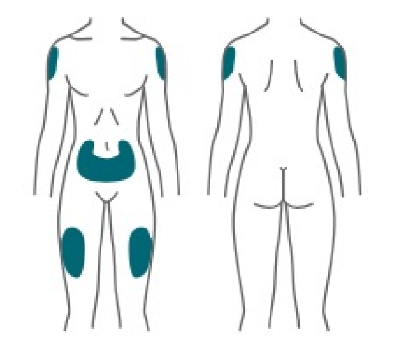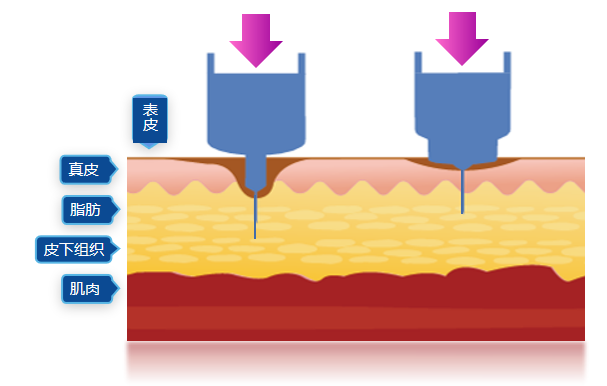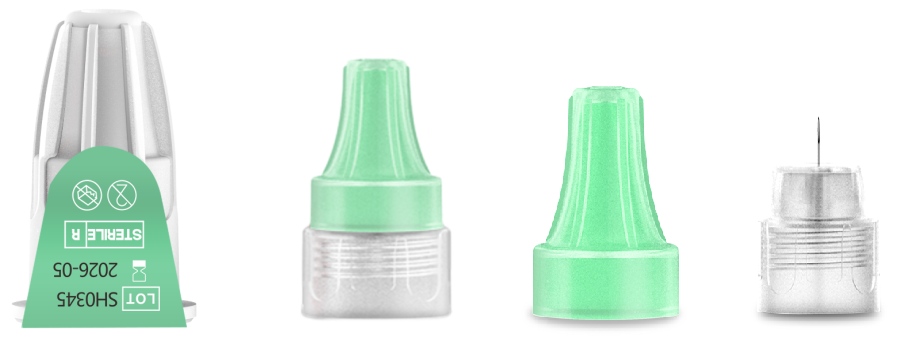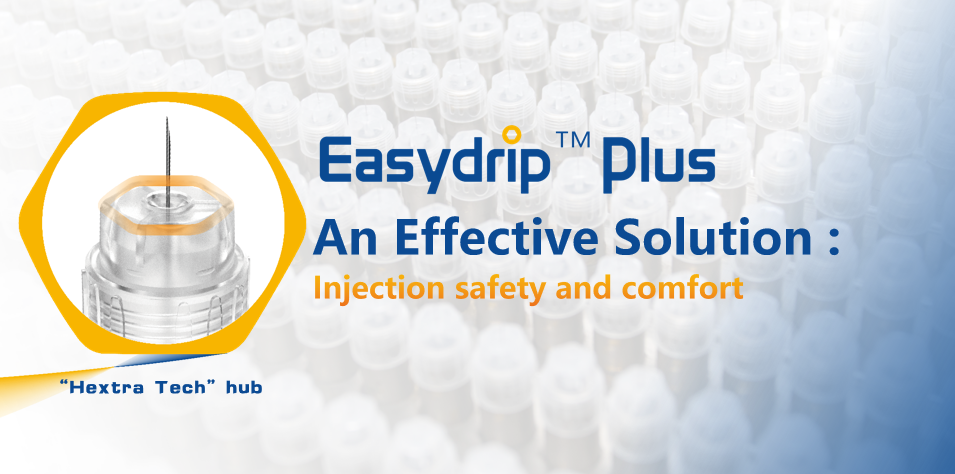


GLP-1 is injected under the skin of the abdomen, thigh, or upper arm (NOT into a muscle or vein).
Patients should change (rotate) the injection site with each injection and not use the same site for each injection. Tell your patients to choose the injection site and wipe the skin with an alcohol swab and to let the injection site dry before they inject their dose.

Follow your doctor`s prescription; the timing and dose (units or quantity) of injection is extremely important. (DO NOT self-adjust doses unless told by your doctor, as this can be really dangerous)
• Be sure to read and check the name of the drug before use.


• If you are using a white, cloudy insulin (suspension formulation), mix it thoroughly each time before use.
• Use a new needle for each injection*1.
• Prime the pen: fill up the needle with insulin or GLP-1*1 before the injection. 1-2 scales of the formulation are needed to fill the needle tip with the drug. Check and see that the drop appears.
• Dispose of the used needle or syringe: throw them away in a designated disposal container to avoid accidental needle sticks.
• Consult the user manual repeatedly until you become confident of self injections.
• Be sure to rotate injection site each time, 2-3 cm away from the previous site to avoid lipodystrophy.
• Visit a clinic or hospital when you have severe or repeated hypoglycemia, or have difficulty eating due to cold or any other medical conditions. (Medical assistance is available at the Emergency Outpatient Department even during nighttime or on holidays. Discuss with your doctor in advance where to consult in such times).
• Always carry around glucose tablets, hard candy or so, and be well prepared for any hypoglycemic (low blood sugar) episodes.
• Continue your prescribed diet/exercise program.
• Consult your doctor regularly and aim for even better glycemic control. • Bring your blood glucose self-management notes when you consult your doctor if you are self-monitoring your BG.